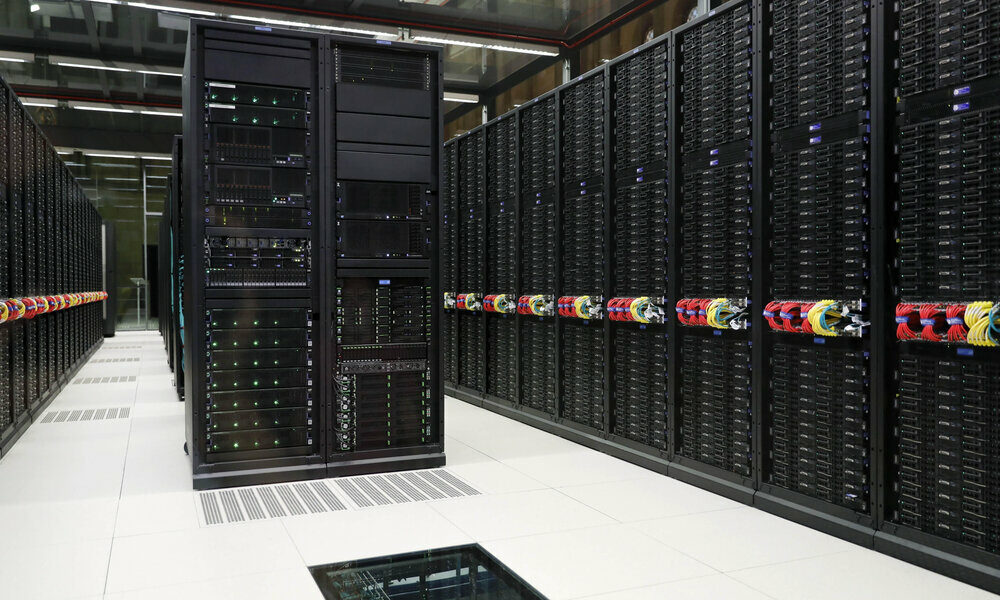
The president of the Government, Pedro Sanchezhas recently visited the facilities of the supercomputer MareNostrum 5 in it Barcelona Supercomputing Center – National Supercomputing Center (BSC-CNS) and has publicly stated the national commitment to gain a preferential position in the supercomputing sector. It is also a strategy that reinforces the strategic autonomy of the European Union.
That EuroHPC Joint Undertaken select the city of Barcelona to host one of its high capacity supercomputers It is a blow to the table in Spain to demonstrate that it can position itself at the forefront of advances such as artificial intelligence or the simulation of the spread of computer viruses.
The MareNostrum 5 will have a power of 200 Petaflops (it will be able to execute 200,000 trillion operations per second), far exceeding the current infrastructure of the Barcelona Supercomputing Center. It is expected that it will begin to function, in favor of scientific research and business innovation, from the second half of 2023.
In the words of Sánchez, the new project exemplifies the country’s commitment to R+D+I system as a vector of growth for Spain, being possible thanks to the provision of a new regulatory framework, a Stable Science Law and powerful research in the sector.
The keys to MareNostrum 5
Supercomputers are used to solve or study complex physical problems, create climate models to predict the future or reproduce aerodynamic models of military aircraft, among other strategic actions. To this is added that the MareNostrum 5 will serve to develop applications in personalized medicine, drug design, bioengineering, cybersecurity and aspects related to climate change.
MareNostrum 5 will also be key in the creation of processors and chips with European technology, strengthen medical research (designing drugs, vaccines and analyzing data) and solving problems that are beyond the reach of digital computers. Likewise, it will play an essential role in the promotion of research projects in areas such as astronomy, computer sciences, life sciences, Earth sciences, and computational applications in science and engineering.
The origins of the MareNostrum 5
The MareNostrum project started in 2004 at the Barcelona National Supercomputing Center, which in recent years has gone from having 60 workers to 600 highly qualified. The first version was built by the Government of Spain and IBM and had a power of 42.3 trillion operations per second.
This was followed by other updates and expansions that led to up to four versions, the last one arriving in the summer of 2017 with a performance of 13.7 petaflops, making it the fastest in Europe. The fifth and final version will be 17 times higher in power and 10,000 times greater compared to the first model.
MareNostrum, as a member of the Spanish Supercomputing Network, is followed by FinisTerrae2 (Galicia), LaPalma (Canary Islands) and Altamira (Cantabria).
Its economic impact
The MareNostrum 5 supercomputer will involve a total investment of €220 million (235 million dollars) and will come to strengthen the collaboration between the government policies of the different autonomous communities. 151 million euros will be allocated to the purchase and installation of components and almost 70 million to cover the costs of the operation until 2028. That said, the distribution of the financing will be: Spain the 23.33%Catalonia the 11.66% and European funds 65% remaining.
It will also be important the repercussion it will have on the Strategic Microelectronics and Semiconductors Project (PERTE Chip) through innovation, job creation and the collaboration of leading companies in the sector.
In fact, based on a collaboration between the Government of Spain and Intel, a laboratory that will generate new supercomputers with an initial investment of €400 million. in turn will generate 300 highly qualified jobs. “The Government, the BSC-CNS and the Intel technology company share the vocation of turning Barcelona into the true European scientific capital”, says Sánchez.
The Tech Wage Gap
The President of the Government took advantage of his appearance, and more so within the framework of the 8M celebration, to publicly express his commitment to reduce the wage gap between men and women, especially in the technological field of STEM vocations (Science, Technology, Engineering and Mathematics). For Sánchez, it is fundamental in this aspect the science law and the Equal Representation Law.



